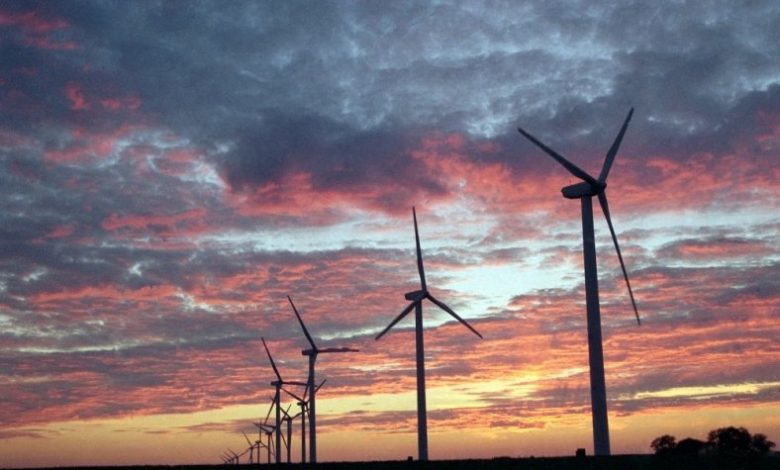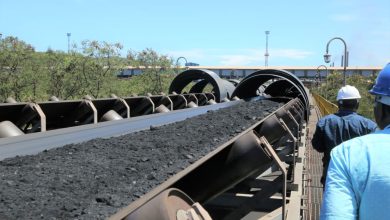Path To Limiting Global Warming To 1.5 ̊C Has Narrowed, But Clean Energy Growth Is Keeping It Open
Yet bolder action is necessary this decade

Driving greenhouse gas emissions from the world’s energy sector to net zero and limiting global warming to 1.5 ̊C remains possible due to the record growth of key clean energy technologies, though momentum needs to increase rapidly in many areas, according to a new edition of the IEA’s landmark Net Zero Roadmap.
The new Roadmap sets out a global pathway to keep the 1.5 ̊C goal in reach, providing a comprehensive update to the groundbreaking original report that was published in 2021 and has served as an essential benchmark for policy makers, industry, the financial sector and civil society. The 2023 Update incorporates the significant changes to the energy landscape in the past two years, including the post-pandemic economic rebound and the extraordinary growth in some clean energy technologies – but also increased investment in fossil fuels and stubbornly high emissions.
Since 2021, record growth in solar power capacity and electric car sales are in line with a pathway towards net zero emissions globally by mid-century, as are industry plans for the roll-out of new manufacturing capacity for them. This is significant, since those two technologies alone deliver one-third of the emissions reductions between today and 2030 in the pathway. Clean energy innovation has also been delivering more options and lowering technology costs. In the IEA’s original Roadmap in 2021, technologies not yet available on the market delivered nearly half of the emissions reductions needed for net zero in 2050. That number has now fallen to around 35% in this year’s update.
Yet bolder action is necessary this decade. In this year’s updated net zero pathway, global renewable power capacity triples by 2030. Meanwhile, the annual rate of energy efficiency improvements doubles, sales of electric vehicles and heat pumps rise sharply, and energy sector methane emissions fall by 75%. These strategies, which are based on proven and often cost-effective technologies for lowering emissions, together deliver more than 80% of the reductions needed by the end of the
decade.
Here are some of the key points from the report :
- The path to 1.5 ̊C has narrowed, but clean energy growth is keeping it open
- As with the 2021 roadmap, there is no need for investment in new coal, oil and natural gas
- Global carbon dioxide (CO2) emissions from the energy sector reached a new record high of 37 billion tonnes (Gt) in 2022, 1% above their pre-pandemic level, but are set to peak this decade
- The speed of the roll-out of key clean energy technologies means that the IEA now projects that demand for coal, oil and natural gas will all peak this decade even without any new climate policies
- Positive developments over the past two years include solar PV installations and electric car sales tracking in line with the milestones set out for them in the IEA’s 2021 Net Zero by 2050 report
- Growth in clean energy is the main factor behind a decline of fossil fuel demand of over 25% this decade in the NZE Scenario
- Tripling global installed renewables capacity to 11 000 gigawatts by 2030 provides the largest emissions reductions to 2030 in the NZE Scenario
- Doubling the annual rate of energy intensity improvement by 2030 in the NZE Scenario saves the energy equivalent of all oil consumption in road transport today
- Electric vehicles and heat pumps drive electrification across the energy system, providing nearly one-fifth of the emissions reductions to 2030 in the NZE Scenario.
- While CCUS, hydrogen and sustainable bioenergy are critical, rapid progress is needed by 2030; the history of CCUS has largely been one of underperformance.
- The world is set to invest a record USD 1.8 trillion in clean energy in 2023: this needs to climb to around USD 4.5 trillion a year by the early 2030s to be in line with the IEA’s pathway.
- By 2030 in the NZE Scenario, total household energy expenditure in emerging market and developing economies decreases by 12% from today’s level, and even more in advanced economies.
- By 2035, emissions need to decline by 80% in advanced economies and 60% in emerging market and developing economies compared to the 2022 level.
- Almost all countries need to bring forward their targeted net zero dates.
“Keeping alive the goal of limiting global warming to 1.5 ̊C requires the world to come together quickly. The good news is we know what we need to do – and how to do it. Our 2023 Net Zero Roadmap, based on the latest data and analysis, shows a path forward,” said IEA Executive Director Fatih Birol. “But we also have a very clear message: Strong international cooperation is crucial to success. Governments need to separate climate from geopolitics, given the scale of the challenge at hand.”
The Roadmap outlines a route to net zero emissions for the global energy sector by 2050 but recognises the importance of fostering an equitable transition that takes different national circumstances into account. For example, advanced economies reach net zero sooner to allow emerging and developing economies more time. And the net zero pathway achieves full access to modern forms of energy for all by 2030 through annual investment of nearly USD 45 billion per year – just over 1% of energy sector investment.
Dave Jones, Global Programme Lead at Ember said: “Tripling renewable electricity is the single biggest action required this decade to secure a rapid shift away from fossil fuels. Electricity is the new oil, as clean electrification takes centre stage. It requires world leaders to think big and build big. It’s not rocket science, but it does require the determination and urgency of a space race. Importantly, emerging economies need investment to enable them to enter the race, which ultimately will benefit us all.”
In the new zero pathway, global clean energy spending rises from USD 1.8 trillion in 2023 to USD 4.5 trillion annually by the early 2030s.
Joyce Lee, Head of Policy and Projects, Global Wind Energy Council (GWEC) said: “This IEA report comes on the heels of a coalition of over 250 organisations – representing a market value of more than $12 trillion, equivalent to the GDP of India, Japan and Germany combined – issuing a clear call to world leaders to back a target to triple renewable energy capacity at COP28. Achieving this goal would create a cascade of tipping points to cut emissions across other sectors, such as by ensuring transport and hydrogen production draw upon green electrons.”
In the updated net zero scenario, a huge policy-driven ramping up of clean energy capacity drives fossil fuel demand 25% lower by 2030, reducing emissions by 35% compared with the all-time high recorded in 2022. By 2050, fossil fuel demand falls by 80%. As a result, no new long-lead-time upstream oil and gas projects are needed, neither are new coal mines, mine extensions or new unabated coal plants. Nonetheless, continued investment is required in some existing oil and gas assets and already approved projects. Sequencing the increase in clean energy investment and the decline of fossil fuel supply investment is vital if damaging price spikes or supply gluts are to be avoided.
2030 means nearly 5 billion tonnes of carbon dioxide would have to be removed from the atmosphere every year during the second half of this century. If carbon removal technologies fail to deliver at such scale, returning the temperature to 1.5 ̊C would not be possible.
“Removing carbon from the atmosphere is very costly. We must do everything possible to stop putting it there in the first place,” said Dr Birol. “The pathway to 1.5 ̊C has narrowed in the past two years, but clean energy technologies are keeping it open. With international momentum building behind key global targets such as tripling renewable capacity and doubling energy efficiency by 2030, which would together lead to a stronger decline in fossil fuel demand this decade, the COP28 climate summit in Dubai is a vital opportunity to commit to stronger ambition and implementation in the remaining years of this critical decade.”
The writer of this article is Dr. Seema Javed, an environmentalist & a communications professional in the field of climate and energy




